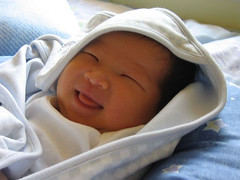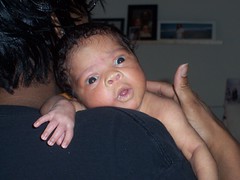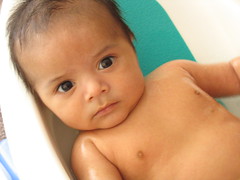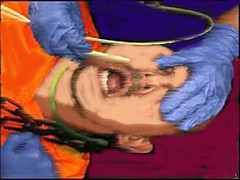 A proclamation on Alcatraz Island tells new arrivals where they are.
A proclamation on Alcatraz Island tells new arrivals where they are. Signs hung on the dock on Alcatraz Island read, from left to right, "Red Power. Indians," "Human Rights, Free Indians," "Remember this land was taken from us!" "Alcatraz for Indians."
Signs hung on the dock on Alcatraz Island read, from left to right, "Red Power. Indians," "Human Rights, Free Indians," "Remember this land was taken from us!" "Alcatraz for Indians." For many people, the occupation was the first time they had been surrounded by other Indian people. The experience was one of cultural renewal, exhilaration, and a new-found sense of Indianness.
For many people, the occupation was the first time they had been surrounded by other Indian people. The experience was one of cultural renewal, exhilaration, and a new-found sense of Indianness. Indian women played a major role in the occupation. They served on the is land council and the security force and worked in the health clinic, the day care center, and the school.
Indian women played a major role in the occupation. They served on the is land council and the security force and worked in the health clinic, the day care center, and the school.  Stella Leach, a Colville/Sioux woman, took a leave of absence from her job at the All Indian Well Baby Clinic in Berkeley, California, to participate in the occupation of Alcatraz Island, where she operated a health clinic for island residents.
Stella Leach, a Colville/Sioux woman, took a leave of absence from her job at the All Indian Well Baby Clinic in Berkeley, California, to participate in the occupation of Alcatraz Island, where she operated a health clinic for island residents. Many of the occupiers brought their families hundreds of miles to live on the island. A preschool and a nursery were operated for those who had children on the island.
Many of the occupiers brought their families hundreds of miles to live on the island. A preschool and a nursery were operated for those who had children on the island. Indian occupiers work to bring supplies onto Alcatraz. The island has no natural resources, so all supplies, fuel, and water had to be ferried over form the mainland and transported up the island by hand.
Indian occupiers work to bring supplies onto Alcatraz. The island has no natural resources, so all supplies, fuel, and water had to be ferried over form the mainland and transported up the island by hand. One of the last occupiers leaves Alcatraz Island, June 11, 1971.
One of the last occupiers leaves Alcatraz Island, June 11, 1971.  On the mainland, on June 11,1971, Harold Patty (left), a Paiute Indian from Nevada, and Oohosis (second from left), a young Cree Indian from Canada, join two friends in demonstrating that the spirit will continue.
On the mainland, on June 11,1971, Harold Patty (left), a Paiute Indian from Nevada, and Oohosis (second from left), a young Cree Indian from Canada, join two friends in demonstrating that the spirit will continue. Overcoming exhaustion and disillusionment, young Atha Rider Whitemankiller (Cherokee) stands tall before the press at the Senator Hotel after the removal. His eloquent words about the purpose of the occupation - to publicize his people's plight and establish a land base for the Indians of the Bay Area - were the most quoted of the day.
Overcoming exhaustion and disillusionment, young Atha Rider Whitemankiller (Cherokee) stands tall before the press at the Senator Hotel after the removal. His eloquent words about the purpose of the occupation - to publicize his people's plight and establish a land base for the Indians of the Bay Area - were the most quoted of the day.Read more about the Alcatraz Occupation here and see more of these fantastic of photos here


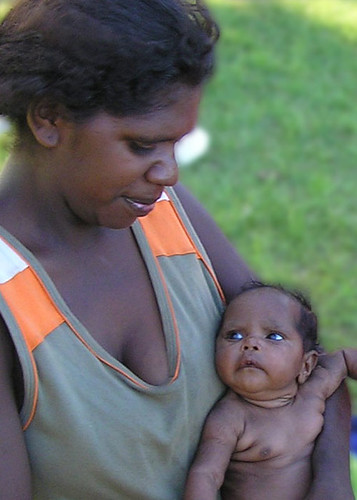

 I have a confession to make. The other day I was reading
I have a confession to make. The other day I was reading  Thanks to
Thanks to 














